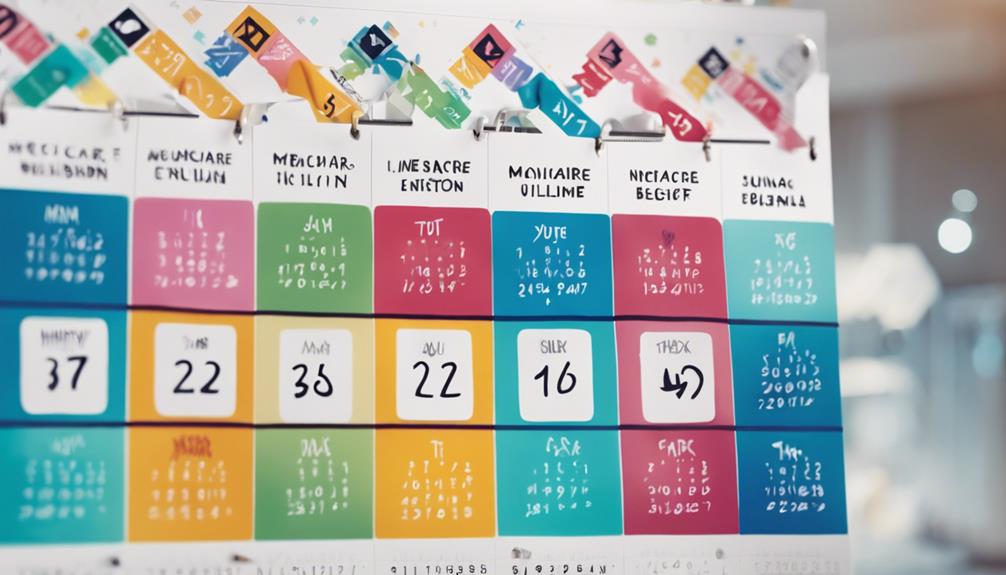
Medicare Part D is a vital program designed to help seniors and people with disabilities afford their prescription medications. However, many enrollees find themselves caught in a confusing labyrinth, especially when it comes to the coverage gap, fondly known as the "donut hole." Understanding this quirky aspect of Medicare is essential for managing costs and ensuring that you can access the medications you need. So, let’s dive into the world of Medicare Part D’s coverage gap!
Understanding Medicare Part D: What Is the Coverage Gap?
Medicare Part D is a federal program that provides prescription drug coverage to eligible beneficiaries. While it offers substantial financial assistance, it also contains certain phases that can significantly impact costs. One of the most notable phases is the coverage gap, which occurs after you and your plan have spent a specific amount on covered drugs. Once you reach this limit, you enter the coverage gap, where you’ll have to pay a larger share of your prescription drug costs until you hit the catastrophic coverage level.
During the coverage gap, the cost of medications can increase unexpectedly, which can be a source of anxiety for many. It’s important to know that the coverage gap does not last indefinitely. Once you reach a certain spending threshold, you move into the catastrophic coverage phase, where your out-of-pocket costs significantly decrease. Understanding this structure empowers beneficiaries to plan their health care finances more effectively.
The Coverage Gap: A Quirky Twist in Medicare Part D
The term "coverage gap" may sound ominous, but it adds a quirky twist to the Medicare Part D landscape. Imagine it as a temporary detour on your journey to affordable medication. During this phase, beneficiaries must pay a higher percentage of their prescription drug costs, which can be a hassle to navigate. However, it’s also a time to assess your medication needs and potentially find more cost-effective alternatives.
For many, the coverage gap becomes a wake-up call to closely examine their prescriptions and consider generic options or assistance programs. Though it may seem daunting, it’s perfect for advocating for better health management. And remember, you aren’t alone on this journey; various resources, including local programs and online tools, can lend you a hand!
Exploring the Coverage Gap: What You Need to Know!
To effectively navigate the coverage gap, it’s important to have a clear understanding of its mechanics. The coverage gap begins after you reach a spending limit set by Medicare for covered drugs. In 2023, that limit is approximately $4,660. From that point on, you’ll face higher out-of-pocket costs until you reach the catastrophic coverage threshold, which is about $7,400 in total out-of-pocket costs.
This gap can be alarming, but knowing the figures helps you prepare. Being proactive about your health and understanding the terminology associated with Medicare can make a significant difference. Whether it’s seeking out discounts, generic medications, or alternative therapies, awareness is your best ally in tackling the coverage gap!
How the Coverage Gap Affects Your Prescription Costs
The coverage gap can significantly impact your prescription costs, leading to sudden increases in what you pay at the pharmacy. Unlike the earlier stages of Medicare Part D, where costs may be more predictable thanks to copayments, the coverage gap often features higher coinsurance rates. This means that a higher percentage of the drug costs comes out of your pocket, which can lead to unexpected financial strain.
Moreover, certain medications can push you into the coverage gap more quickly than others. Specialty drugs, for example, can be quite expensive, accelerating your total costs. It’s essential to be aware of your medication expenses and track your spending to prevent surprises. By keeping tabs on your total costs, you can better manage your health care budget.
Avoiding Pitfalls: Navigating the Coverage Gap with Ease
Navigating the coverage gap may feel like walking a tightrope, but with the right strategies, you can avoid common pitfalls. First and foremost, always review your Medicare Part D plan annually. Plans change, and what worked last year may not be the best fit this year. By shopping around and comparing plans, you can find one that minimizes your exposure to the coverage gap.
Additionally, utilize the services offered by your local pharmacy or Medicare counselors. They can provide personalized advice on how to manage your prescriptions and costs during the coverage gap. Knowledge is power, and equipping yourself with the right information will enable you to glide through this tricky phase with ease!
Happy Days Ahead: Tips for Staying Out of the Gap!
While it’s impossible to entirely avoid the coverage gap, there are several tips and tricks to help you stay out of it longer. One effective strategy is to use generic drugs whenever possible. Not only are they usually more affordable, but they also count towards your total drug spending, which can delay reaching the gap.
Another handy tip is to keep an eye on your medication list. If you notice your prescriptions changing frequently, consider working closely with your healthcare provider to evaluate your medications. Together, you may find that some prescriptions can be adjusted or replaced, keeping you out of the costly coverage gap for just a bit longer!
The Numbers Game: What Triggers the Coverage Gap?
Understanding the numbers that trigger the coverage gap is crucial for managing your out-of-pocket costs effectively. As mentioned, the coverage gap begins after your total drug costs exceed a certain limit. However, it’s essential to distinguish between your out-of-pocket spending and the total costs of your medications, which includes what your plan pays as well.
For instance, specialty medications can quickly escalate your total costs and push you into the coverage gap sooner than you might anticipate. Regularly monitoring your spending and utilizing cost comparison tools can help you stay ahead of the curve and keep those numbers in check!
Busting Myths: Common Misconceptions About the Gap
There are plenty of misconceptions surrounding the coverage gap that can lead to unnecessary confusion. One common myth is that once you hit the coverage gap, you’ll have to pay full price for your medications. However, many plans offer discounts on brand-name drugs during the gap, making them more affordable.
Another myth is that the coverage gap always results in exorbitantly high costs. While out-of-pocket expenses do rise, many beneficiaries can still find ways to manage their costs effectively through alternatives such as patient assistance programs, copay cards, and more. Busting these myths is crucial for fostering confidence among beneficiaries as they navigate their prescription drug coverage.
Key Strategies to Manage Your Coverage Gap Smartly
Managing the coverage gap smartly requires a combination of vigilance, planning, and resourcefulness. One key strategy is to always keep your medications organized and within view. By knowing what medications you take regularly and their costs, you can adjust your treatment plan as needed, thereby avoiding or reducing costs during the gap.
Additionally, consider joining a support group or an online community of Medicare beneficiaries. Sharing experiences and tips can lead to discovering valuable information that may help in managing the coverage gap effectively. The more informed you are, the better you can strategize your health care!
The Silver Lining: Benefits of Navigating the Coverage Gap!
While the coverage gap may seem intimidating, it also offers opportunities for reflection and adjustment in your health care journey. By assessing your medications and seeking cost-effective alternatives, you may uncover new, affordable options you hadn’t considered before. This period can act as a catalyst for improved health management and awareness.
Furthermore, the experience of navigating the coverage gap can empower beneficiaries to take charge of their health care decisions. With the right approach, you can emerge with a clearer understanding of your needs, possibly leading to healthier choices in the long run. Embrace this challenge as a chance for growth and improvement!
Navigating the coverage gap in Medicare Part D may feel like a roller coaster ride, but with knowledge and preparation, you can steer your way through it with confidence. By understanding the ins and outs of the gap, utilizing strategic tips, and debunking common myths, you can effectively manage your prescription costs and maintain access to your medications. Remember, you’re not alone in this journey—there are many resources available to help you navigate the twists and turns of Medicare with a smile! Happy navigating!





